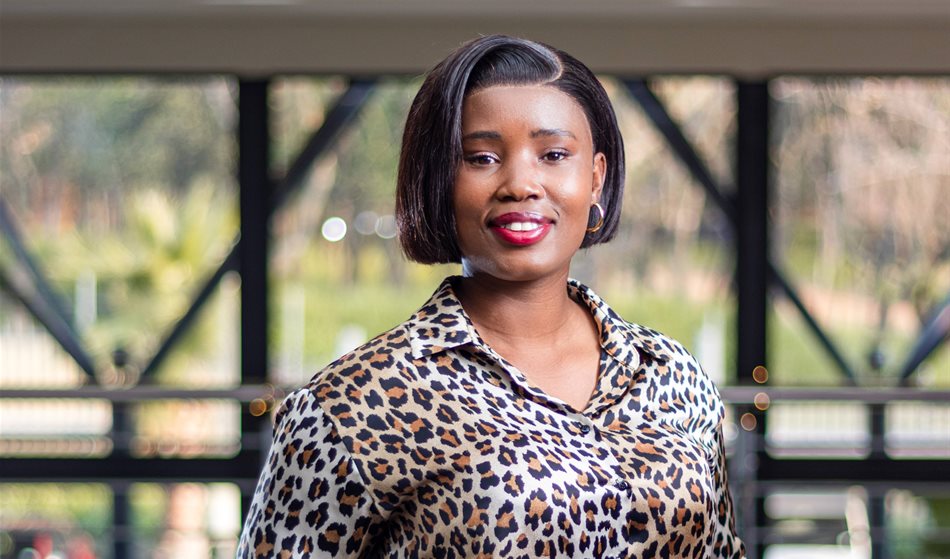This is despite the fact that women make up less than 28% of the global technology workforce and just 17% of CEOs. While the stats may not reflect the strides women are making in tech, the sector is not short of women who are leading the pack, breaking barriers and creating real impact.
Locally, women like Aisha Pandor, co-founder of SweepSouth, an online platform for booking, paying and managing home services, have created a tech platform that not only solves for domestic services but is advocating for financial and digital inclusivity by connecting thousands of previously unemployed home service providers to work opportunities across the continent.
This demonstrates the intersection of technical capability, the intuition to solve problems, and the natural inclination that women have to focus on things that impact humanity.
Inspired by making a difference in the spaces they operate in, three women who work for global ICT company Huawei, embody exactly how big a role women can play in the sector by addressing some of the country’s biggest challenges in driving innovation through their efforts in helping mobile networks overcome load shedding, assisting businesses of all sizes embrace the latest cloud technologies, and developing important skills among the next generation of technology workers.
Women driving change
Phumzile Nase, a technical director at Huawei, is leading a project aimed at ensuring that mobile network base stations are immune to load shedding. The power-as-a-service (PaaS) project brings together a number of technologies, including solar panels, batteries, and a generator, to ensure that a base station is never without power. The solution, called PowerCube, could also make it easier to install base stations in remote areas where access to electrical mains is either difficult or impossible.

Phumzile Nase
It’s something she feels could have a massive positive impact on the lives of ordinary South Africans.
“I can’t emphasise the importance of this PaaS solution for South Africa enough,” she says. “With the PowerCube, we are able to ensure that communities, businesses, and households are connected and are able to connect with the world. To be a woman leading such an amazing solution is really amazing.”
Matshidiso Jabane, meanwhile, is a partner development manager in Huawei’s cloud division. Her job entails, among other things, building and maintaining relationships with cloud partners, identifying new potential partners, negotiating deals with them, and ensuring that cloud services meet customer requirements.

Matshidiso Jabane
Her love of technology is deep-seated and played an important role in getting her to the position she’s in today.
“Growing up, technology was not within my reach, but I have always been interested in understanding exactly how it works,” she says. “That is when I decided to study Computer Science. Through my studies, I fell more in love with technology, and my interest grew stronger and stronger. Cloud was then introduced as a game-changing technology, and I wanted to be part of it.”
But the Huawei women aren’t just exercising their skills in the technology sector, they’re also helping build up the skills of the young people coming up after them.
Nasrin George is a 27-year-old Project Control Manager (PCM) at Huawei. Having started out in human resources, she’s now heavily involved in skills development at the company.

Nasrin George
“Whilst HR was something I was very capable of doing, I wanted to be involved in something that sparked a bit more passion in me and allowed me to get out of my comfort zone,” she says. “The opportunity to work as a PCM on various training and skills development projects seemed more in line with my career growth and aspirations.”
Overcoming barriers
Each one, has also had to overcome barriers to get where they are today. Not all of them were gender-related, underlining how different forms of discrimination can intersect with each other.
“It wasn’t just being a woman but being a woman of colour and dealing with imposter syndrome, that made it quite difficult to be seen or heard,” Nase says. “Fortunately, I had an amazing mentor and manager who always pushed me to speak firmly and assertively in meetings or any open discussion. With that, my confidence started to build up, and I was able to sit in a meeting and give my input.”
For Jabane, coming from a lower-income background was also an obstacle.
“I’d never owned a laptop until my first year of university,” she says. “That was a challenge for me because almost all my modules required me to use a computer, and I was not computer literate. So, I had to work twice as hard.”
Noticeable shift
All three have, however, also seen noticeable improvements in the way women are perceived over the duration of their careers.
“In the past five years, I have seen more women taking up space in the technical field,” Nase says. “It brings me so much joy when I’m in a room with new female employees fresh out of university or in a meeting where 30 to 40 percent of the attendees are women.”
“The world is now more welcoming towards women in tech,” Jabane agrees. “Since the start of my career, I’ve seen more and more women within the tech industry holding high positions in different organisations.”
“In my current role, I have seen that there are a growing number of female trainees in the classroom when we deliver training sessions,” says George. “These trainees are largely in the technical fields such as IT Engineering, for example. This is very inspiring to me, and I feel like we are bridging the gender gap and making great strides in becoming more inclusive.”
She cautions, however, that there is still a lot of work to be done.
“I think in general there is still a big gap between men and women in the workplace especially in the ICT sector,” she says. “The stigma behind women being able to do what is considered ‘men’s work’ or more technical roles is very prevalent.”
Equipping the next generation
While those attitudes will likely shift further as more and more women take up technology roles, young women entering the space will still have obstacles to overcome. As such, Nase says it's important for young women entering the sector not to underestimate the value of hard work and determination.
“It's really an amazing field to work in and there is so much to learn and experience,” she says. “But like any other position or field, one has to put in the work and time to prove your ability. You must be willing to work hard, put in more hours, persevere through the difficult moments, and be willing to keep up with the fast-paced world of ICT.”
“The price of success is hard work and dedication to the job at hand regardless of the obstacles in the way,” she adds. “There has never been a better time to be a woman in ICT and it’s our responsibility as women to prove that our place at the table is no accident.”
George, meanwhile, believes it's about women recognising the power they hold.
“We as women should know our power and value and stand firmly in that,” she says. “Especially in a skills development space, we can directly make a difference in the number of high-quality training opportunities available to women in particular. We can be the drivers of change.”
Finally, Jabane says it’s important for women to grab opportunities that open up for them, regardless of how prepared they might feel.
“Do not hold back, go for it,” she says. “It does not matter whether you have a technical background, there is always space to learn.”